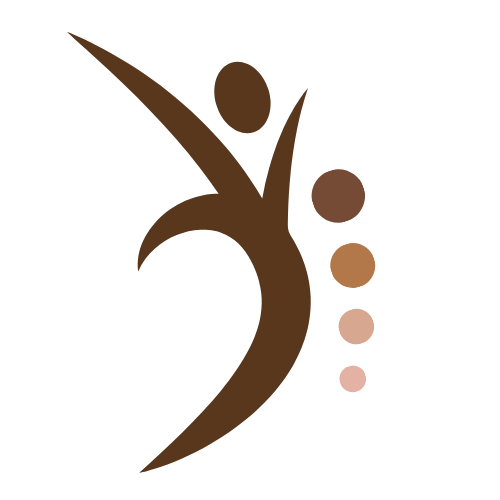Anúncios
This Engagement guide shows you how to connect the dots between people, purpose, and performance in practical, responsible ways for 2025 and beyond.
Why are two-thirds of workers thinking about a job change after early 2024? That shift matters because the bar for transparency, inclusion, and participation is higher than ever. You need a clear approach that uses data and small tests to learn fast.
Inside, you’ll find a simple strategy blueprint, stakeholder analysis, and channels that work online and offline. The text gives tools and insights, points to frameworks like IAP2, ABCD, and CBPR, and notes their strengths and limits.
No one-size-fits-all promise: apply ideas to your context, measure outcomes, and adapt. Try quick pilots, keep notes on goals and stakeholders, and prioritize ethics—accessibility, privacy, and consent—so trust grows as you scale.
Anúncios
Introduction: your Engagement guide to connection, performance, and trust
In 2025, shifting work patterns and higher standards for openness are changing how people and institutions connect.
Why now: hybrid work, online communities, and heightened accountability make engagement a business and civic imperative, not a nice-to-have.
How it works: clear communication, transparency, and responsive listening shape trust and affect participation and decision quality across organizations.
Anúncios
What this section covers and how to use it responsibly
Treat this as a playbook, not a prescription. Make sure each step fits regulations, accessibility rules, and local norms.
Start small. Set simple goals as a first step — for example, raise one survey response rate or reach one underrepresented group. Use resources wisely and build capability over time.
Key terms you’ll see throughout
- Community engagement: CDC — working collaboratively with groups to address well-being.
- Participation: IAP2 — active dialogue and decision-making roles.
- Equity: RWJF — giving people what they need for full, healthy lives.
- Stakeholder: Freeman — anyone who can affect or be affected by organizational aims.
Equity and inclusion are embedded lenses here. Later sections give a clear process, practical resources, and short examples so you can act with confidence and gather useful insights.
Engagement made clear: definitions, domains, and outcomes
Practical clarity about terms and outcomes makes your efforts easier to measure and defend. Define what you mean before you design activities. That reduces confusion and helps teams act together.
Community and stakeholder engagement: CDC and IAP2 perspectives
Community engagement (CDC) frames work as collaboration with groups to address well-being. IAP2 adds that participation should influence decisions, not just inform people.
That means a two-way process: you invite input, you explain trade-offs, and you show how input shaped choices. Data and closed-loop feedback are part of the definition.
Employee engagement: what it is and what it isn’t
Employee engagement describes how connected people feel to their work, team, and mission. It is about daily meaning and relationships inside organizations.
Perks alone do not equal true engagement. Achievers and practitioners note that consistent clarity, timely feedback, and recognition matter more than one-off events.
Common outcomes: equity, decision quality, relationships, and accountability
You can reasonably observe improved decision quality when diverse input informs choices. You can also track stronger relationships and clearer accountability as inputs are acted on.
- Measure participation fairness and who is missing.
- Track closed-loop communication so people see influence on outcomes.
- Monitor relationship health indicators like trust and repeated collaboration.
Outcomes depend on context, design, and follow-through. A small pilot helps you test definitions, metrics, and whether your strategy and approach make sense before scaling.
How engagement evolved: from grassroots to digital networks
From neighborhood meetings to hashtag movements, the ways people connect have shifted dramatically.
Quick timeline: In 1974 the Community Development Block Grant (CDBG) built public input into planning. The 1993 National and Community Service Trust Act launched AmeriCorps, formalizing cross‑sector service. In the late 2000s corporate social responsibility pushed organizations to include social and environmental goals in business strategy. By the early 2000s, social platforms helped movements like #MeToo and #BlackLivesMatter scale fast.
These milestones changed tools and expectations. Digital platforms extend reach and provide real‑time data and insights. But they also raise moderation, misinformation, and privacy risks.
- Design matters: platforms are tools, not a strategy. Good process scales; weak process is amplified.
- Pair online forums with offline touchpoints so less connected people still participate.
- Set clear rules of engagement, accessible formats, and transparent moderation to keep attention on constructive outcomes.
Document lessons from past projects, pick platforms that fit your goals and governance, and remember that lasting change depends on trust built over time.
The Engagement guide strategy blueprint
Translate intent into a short, testable plan. Start by turning mission language into specific aims you can measure this quarter.
Set SMART objectives
Make objectives Specific, Measurable, Achievable, Relevant, and Time-bound. For example: raise survey response from 12% to 25% in 90 days and report learning monthly.
Choose an approach
Use the IAP2 spectrum to decide how much power you share: inform, consult, involve, collaborate, or empower. Each choice changes scope, timeline, and commitments.
Map short and long horizons
Plan a near-term pilot that gives a quick win and reveals capacity needs. Pair that with a longer commitment for sustained change.
Pick frameworks with care
- ABCD: lift local assets.
- CBPR: use when co-learning matters.
- Collective Impact: for multi‑year, cross‑sector work.
Frameworks are tools, not guarantees. Fit depends on stakeholders, timelines, and governance.
Simple process checklist
- Define scope and goals.
- Clarify roles and methods.
- Plan communications and feedback loops.
- Capture decisions and allocate coordination resources.
Keep documentation short: one page for goals, one for approach, one for measures. Build pauses for reflection and validate ideas with small projects before scaling.
Stakeholder analysis made practical
Start stakeholder analysis by listing every person and group who touch your plan, even those usually missed.
Identify and prioritize: list all groups affected by or influencing your work — caregivers, night-shift staff, and informal community leaders. Note interests, needs, and potential benefits or concerns.
Assess influence and interest: use an interest-influence grid to focus limited resources on the relationships that matter most for decisions. Prioritize who you’ll contact first and why.
Practical tools and steps
- Create a stakeholder map to show connections between groups and decision points.
- Use social network analysis to find connectors and bridge-builders who extend reach.
- Run short interviews with a sample to surface expectations, constraints, and communication preferences.
Treat your analysis as a living document. Update it after each major step so your plan reflects changing roles and context.
Ethics and validation: protect privacy, get consent for data use, and pair quantitative maps with qualitative insights. Validate assumptions directly with stakeholders before finalizing decisions.
Channels that work: town halls, focus groups, surveys, and platforms
Match your question to a channel: broad updates need different methods than deep listening.
When to use town halls versus focus groups
Town halls are best when you need wide awareness, transparent Q&A, and real-time updates. Use them to inform many people and surface common priorities.
Focus groups work when you need depth. Run sessions with 6–10 participants to uncover the “why” behind patterns and test new ideas in a small, safe setting.
Designing effective surveys and feedback loops
Use a short, mobile-ready survey to quantify sentiment and rank issues. Keep questions clear, inclusive, and limited to essentials.
Then follow up with focus groups to explain surprising results and refine options.
- Write plain language questions and avoid double-barreled items.
- Make the survey brief and accessible on phones.
- Plan to close the loop: share findings and next steps within two weeks.
Digital platforms for inclusive, accessible participation
Pick platforms that support asynchronous input, low-bandwidth access, and language options. Prioritize accessibility, clear moderation settings, and strong privacy controls.
Mix channels so people with different schedules and comfort levels can join. Pilot a single-topic town hall or a short series of focus groups to refine facilitation and logistics.
Praktyczne wskazówki: remove barriers rather than over-rewarding volume. Track each channel with simple metrics—reach, quality of input, and participant experience—so you can iterate with the right tools.
Good communication and timely feedback build trust. Use a mix of town halls, focus groups, surveys, and platforms to include diverse voices and act on what you learn.
Measuring engagement: from pulse to action
Set a listening rhythm that captures small signals before they become big problems. Blend short pulse checks, milestone surveys, and manager one-on-ones so you catch lifecycle moments in real time.

Listen often and on purpose: pulses, moments, and lifecycle signals
Use very short pulses (1–3 items) weekly or monthly and a brief survey after key milestones. Track clarity, workload, recognition, and inclusion so you know where to focus.
Turn data into decisions: closing the loop transparently
Only collect data you will use. Be explicit about purpose, storage, and who sees results. Publish a simple measurement calendar so people know when they can contribute.
- Analyze and surface themes.
- Share findings and invite comments.
- Name actions, assign owners, and set timelines.
- Report progress at set intervals.
Qualitative depth: ask questions that reveal the “why”
Use focus groups and one-on-ones to gather stories and specific examples. Ask questions that invite examples, trade-offs, and suggestions—never just yes/no.
Train managers to listen for patterns, escalate themes (without naming people), and turn feedback into clear next steps. Use simple charts to show trends, but avoid ranking teams in public.
Analytics that matter: leading indicators, patterns, and equity
Good analytics help you see small shifts before they become big problems. Build a simple set of early signals that surface participation trends, recognition, and workload so you can prioritize action.
Behavioral signals: participation, burnout, and quiet disengagement
Track participation rates by group, response time to surveys, recognition frequency, and meeting load as leading indicators.
Watch for declines in contribution, more after-hours messages, and sudden meeting cancellations. These patterns often signal burnout or quiet disengagement.
Equity lenses: who’s engaged, who’s missing, and why it matters
Include an equity review on every dashboard. Compare participation across roles, locations, and demographics while protecting privacy.
Numbers alone can mislead. Pair data with short conversations to understand context before you act.
Dashboards that guide action without overpromising
Design dashboards with a few actionable metrics per audience, clear owners, and set refresh cycles. Add resource tags so leaders see where training or tools could help.
- Focus on signal metrics: participation by group, recognition cadence, and meeting burden.
- Avoid vanity metrics and claims based on partial data.
- Publish findings and next steps to keep attention on continuous improvement.
Employee engagement pillars you can operationalize
Turn core pillars into simple routines that make daily work clearer, fairer, and more motivating for people. Use short habits rather than big programs so teams can learn and adapt quickly.
Clarity, feedback, and ongoing communication
Set clear weekly goal reviews and crisp role descriptions so everyone knows success measures and goals.
- Weekly goal check-ins and a one‑page role summary for each position.
- Structured one‑on‑ones and short retros to make feedback routine.
- Regular team updates, open office hours, and occasional leadership AMAs for steady communication.
Growth, inclusion, psychological safety, and work-life balance
Link learning budgets to stretch projects and transparent career paths. Make psychological safety a practice, not a slogan.
- Dedicated learning time and project rotations to support employees’ growth.
- Rotate facilitators, run blameless postmortems, and set meeting norms to protect focus time.
- Define meeting hygiene and realistic scoping to guard work-life balance.
Purpose and relationships: managers, peers, and teams
Show daily how tasks connect to mission outcomes and build stronger relationships with simple rituals.
- Story-led updates that tie tasks to customer or community impact.
- Peer recognition, buddy systems, and manager coaching that prioritizes listening.
- Document routines so teams can audit, adapt, and propose small changes that help build better habits.
Practical next step: pick one routine to pilot this month, document it, and invite the team to tweak it. Small tests help build trust and better work over time.
Recognition, trust, and culture: small moments, big signals
Small recognition moments often signal whether your culture is healthy or fraying.
What effective recognition looks like: make praise timely, specific, and tied to behaviors or values you want to reinforce.
What effective recognition looks like: timely, specific, values-based
Tie recognitions to concrete actions and outcomes. Avoid vague praise; name the behavior and the impact.
Pair recognition with constructive feedback so people can repeat strengths and grow skills.
Monthly recognition and advocacy: what recent data suggests
Research from the Achievers Workforce Institute shows employees recognized meaningfully at least monthly are about six times more likely to recommend their employer.
That is a correlation, not proof of cause. Still, the data offers useful insights for your strategy.
- Weave recognition into existing channels to lower friction and keep communication authentic.
- Use peer-to-peer recognition to broaden participation and ease pressure on managers.
- Keep recognition fair and inclusive to build trust across teams.
- Apply light governance: values tags, inclusive language guides, and review patterns when you’re ready.
Simple practice: aim for one meaningful recognition per person per month, track gaps, and celebrate behind-the-scenes contributors to strengthen relationships and engagement.
Technology stack for engagement: tools, integrations, and governance
Choose platforms that help you act quickly on what you hear, while protecting people. A practical stack connects channels, reduces manual steps, and keeps your ethics front and center.
Criteria to evaluate platforms: accessibility, security, and fit
Look for WCAG compliance, multi‑language support, and simple interfaces so more people can join.
Security should include SSO, encryption at rest and in transit, and granular admin controls. Check admin usability so admins can manage without heavy vendor support.
Integrations that reduce friction and improve participation
Integrate with chat, email, calendars, and HRIS/CRM to lower barriers and improve data quality. Real‑time dashboards help your team act, but only with clear governance.
Data privacy, consent, and ethical guardrails
Adopt data minimization, retention rules, consent tracking, and role‑based access. Publish transparent notices that explain what data you collect and how people can opt out.
- Test with a small group to validate workflows and templates before roll‑out.
- Review vendor DPAs, incident response, and export/portability options to avoid lock‑in.
- Plan onboarding, training, and regular audits so resources support the process and policy keeps up with change.
Leadership behaviors that enable engagement
Leadership that models curiosity and steady habits helps teams move from confusion to progress. You influence culture through what you do every day, not by promising results. Focus on observable actions that invite participation and build trust.
Modeling transparency and psychological safety
Share context, constraints, and decisions promptly, even when answers are incomplete. That kind of transparency reduces rumor and clarifies trade-offs.
Respond to bad news with curiosity rather than punishment. Thank the person who surfaced the risk and ask clarifying questions. This signals psychological safety and encourages people to speak up.
Manager routines: high-quality one-on-ones and clear goals
Run weekly one-on-ones with a shared agenda. Use the time to listen, surface blockers, and capture short agreements so progress is visible.
Set clear goals that match team capacity and allow trade-offs when priorities change. Refresh goals every quarter and link them to what people actually do day to day.
- Ask questions and listen more than you speak to invite better input.
- Document agreements from one-on-ones so accountability is shared.
- Use survey insights and conversations to remove blockers and adjust plans.
- Hold office hours or AMAs to humanize leaders and improve communication across levels.
Don’t overload managers. Provide training and resources to grow coaching skills progressively. Encourage peers to form communities of practice that share playbooks, lessons, and practical insights.
For a short set of practical leadership behaviors you can test this month, start with weekly one-on-ones, clearer goals, and a single leader AMA. Track results and refine your approach as you learn.
Planning the work: resources, roles, and risk management
Clear resourcing and simple risk logs keep projects moving when surprises arrive. Use a short planning lens that maps who does what, how much time and money you need, and where partners can help.
Resourcing your plan: budget, time, and partners
Map the required resources—people, budget, tools, and time for coordination, facilitation, and analysis. Be explicit about who fills each role.
- Roles: sponsor, lead, facilitator, analyst, communications owner.
- Partners: identify internal teams or community partner groups who extend reach and credibility.
- Sizing: estimate hours and costs per small project so you can bundle realistic work.
Anticipating risks: fatigue, tokenism, and accessibility gaps
List likely risks and match each with a mitigation. Common issues include participant fatigue, tokenism, accessibility barriers, and privacy concerns.
- Participant fatigue — limit contact, close the loop quickly, and publish outcomes.
- Tokenism — set representation goals and require meaningful roles, not just attendance.
- Accessibility gaps — budget for captions, interpreters, and low‑bandwidth options.
- Privacy — apply data minimization, consent tracking, and clear storage rules.
Iteration cycles: pilot, learn, adapt
Scope small pilots as your first step. Run a short test, gather simple measures, and adapt the approach before scaling.
- Pilot a single project with clear success criteria.
- Collect quick feedback and basic analytics.
- Adjust roles, timeline, or tools based on what you learn.
Practical controls: keep a concise risk log with probability, impact, owner, and mitigations. Document assumptions and dependencies so surprises are fewer.
Before you scale, confirm you’re ready: visible leader support, minimal viable tools, and one clear next step. That combination protects teams and helps the strategy stick.
Real-world illustrations: organizations building trust and outcomes
Real projects reveal how small tests and clear roles move trust from promise to practice. Below are compact examples that show how frameworks translate into practical work and measurable steps.
Community collaboration inspired by CBPR and ABCD
A community health project used CBPR principles: residents and academics co-wrote survey questions, collected data together, and co-led analysis sessions. That shared design meant results felt owned and credible.
An ABCD-style neighborhood mapping effort cataloged local skills, vacant spaces, and toolsets. Micro-projects—tool libraries and repair pop-ups—launched within two months, using local volunteers and donated space.
- Takeaways: co-ownership, transparent decision records, and small early wins built confidence and trust.
- Equity steps included multi-language sessions and stipends or childcare to reduce barriers.
- Partners like local nonprofits helped reach underrepresented groups and broaden results.
Workplace examples using continuous feedback
One company tested weekly pulses, monthly recognition, and quarterly retros. Short pulses collected quick data on workload and clarity; recognition reinforced helpful behaviors.
Leaders used pulse trends and recognition patterns to rebalance workloads and clarify goals. Teams published “what we heard / what we’re doing” after each milestone to close the loop.
- Document decisions, share simple dashboards, and invite comment.
- Partner with employee resource groups to surface missing voices.
- Results varied by context, but process improvements and relationship quality were observable outcomes.
Adapt these approaches to your constraints, document what you learn, and prioritize small wins that build lasting trust.
Wniosek
Wniosek
Make a practical next move today: a short pilot, clear measures, and a public follow-up. Pick one strategy from this guide, run a small test, and measure signals that matter to your team.
Define your engagement goals, align channels and behaviors, then close the loop with “what we heard / what we’re doing” updates. Center accessibility, privacy, and equity at every step to include more people and reduce harm.
Keep learning, ask questions, and celebrate small wins. Do a quarterly review of your engagement strategy so you retire what’s not working and scale what is. You’re ready to start small today — steady, thoughtful work compounds.
Thanks for reading. You’re ready, and you’re going to make progress.



